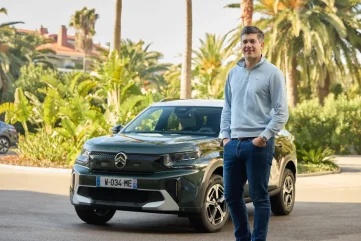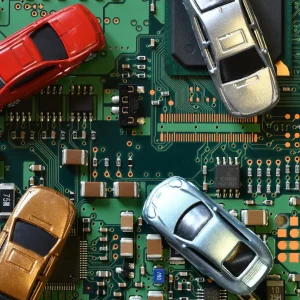
Salary sacrifice (sal-sac) has proved to be a popular employee scheme, where staff can ‘sacrifice’ some of their salary in return for a brand-new, probably electric, company-leased car – unless it’s a Citroen that you want! However, UK MD Greg Taylor says this is about to change.
He said: “We are going into sal-sac in a big way, with the new range of cars, that gives us a phenomenal opportunity.
“This is because sal-sac is often associated with middle and upper management tiers, and higher allowances. However, there’s a lot of other people that could benefit from this scheme that can’t maybe afford a £40,000+ EV!
So, if we bring a car in at £22,000 in sal-sac, it’s a great opportunity for us, and we’ll be competitively priced as well, which is somewhere Citroën hasn’t really operated before.”
But will the C3, or C3 Aircross, be a more EV or ICE mix?
Taylor said: “It depends on the channel. If it’s Motability, I think we will have a 50/50 BEV/ICE mix. In corporate and true fleet, I would expect us to deliver a slightly richer BEV mix, and if you look at rental, I would expect us to be delivering more petrol mix.
“On rental the objective is to more or less hit the ZEV mandate, but from a corporate and true fleet side, we will over index on the BEV side.
“E-C3 Aircross versions are priced so that drivers can make the decision as to how much they value the additional range from the bigger battery. So, effectively there’s no compromises, the customer makes the decision.
“If they want a lower range and to pay less or use cases for over 90% of their driving is doing no more than 50 miles a day, they’re not going to need any more than the small battery. If they do longer journeys every other week, they have the option to pay more for the ability to go further. To have both options is a great opportunity for us.
“If you look at the history of other Citroen EV models that have two battery options, customers tend to gravitate towards the bigger battery versions – for peace of mind, and there’s an RV uplift for the bigger battery.
“For cash customers, and those that don’t need it, it’s nice to have battery options. The good news is, that because they’re built on the same production line, we can follow customer demand.
“C3 is more likely to be a job-use fleet car. C3 Aircross will also have job-use cases, and we expect to win some job use business, but in terms of user chooser, they’re more likely to choose the C3 Aircross from a sal-sac perspective. This by virtue of the fact it does offer a similar level of range, look, but with added flexibility, and the ICE version has the option of seven-seats.
“The seven-seat option is a smaller part of our mix planning for C3 Aircross, but it’s about giving customers choice. What we do know, is historically seven-seater cars have done very well in Motability. Motability is a huge part of the fleet market.”
Finally, we asked Taylor if he had any worries about which Stellantis brand would come out on top, with Citroen and Vauxhall offering similar models.
He said: “We’re not worried. We know we’re aggressively priced, well-appointed, and I think our design is incredibly cohesive, with the new family look.”





